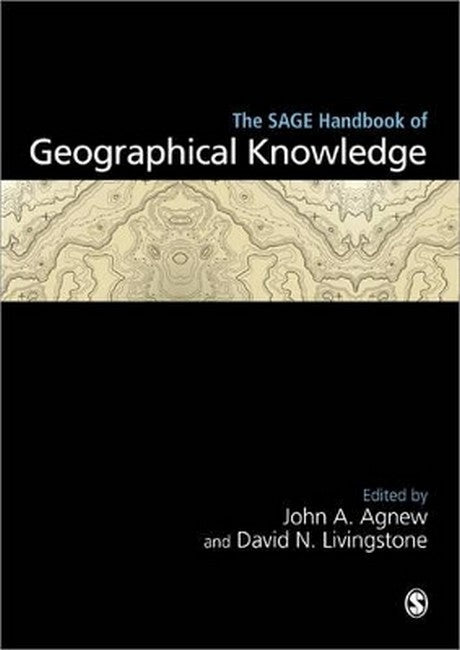Agnew is currently Distinguished Professor of Geography at the University of California, Los Angeles(UCLA). From 1975 until 1995 he was a professor at Syracuse University in New York. Dr. Agnew teachescourses on political geography, the history of geography, European cities, and the Mediterranean World. My research interests congregate around several related themes: the histories of geographical knowledge, the spatiality of scientific culture, and the historical geographies of science and religion. I am currently involved in writing a social history of climatic determinism from Herodotus to Global Warming under the working title 'The Empire of Climate''. This project is funded by a Leverhulme Trust Major Fellowship.
Request Academic Copy
Please copy the ISBN for submitting review copy form
Description
Introduction - John A. Agnew and David N. Livingstone PART ONE: ORIENTATIONS Geography's Geneologies - Robert J. Mayhew Geography's Narratives and Intellectual History - Charles W. J. Withers PART TWO: GEOGRAPHY'S VENUES The Field - Keith Richards Museums - Simon Naylor and Jude Hill Laboratory/Observatory - Scott Kirsch Archive - Miles Ogborn Botanical Gardens and Zoos - Nuala C. Johnson Learned Societies - Michael Heffernan Geography Information Systems Laboratory - Michael F. Goodchild Art Studio - Stephen Daniels The Weather Station and the Meteorological Office - Keith Richards Centre of Circulation - Heike Joens Remote Sensing - Yongwei Sheng Spaces of Hegemony? Circuits of Value, Finance Capital and Places of Financial Knowledge - Roger Lee The Mission - Georgina Endfield Battlefield - Gerard Toal/Gearoid O Tuathail Making Mathematical Models Perform in Geographical Space(s) - Stuart N. Lane Subaltern Space - Daniel Clayton Public Sphere - Mustafa Dikec The Role of Geography and Geographers in Policy and Government Departments - Tim Unwin PART THREE: CRITICAL CONCEPTS AND CONTROVERSIES Nature and Society - Noel Castree Landscape - John Wylie Space and Place - John Agnew Time - Mike Crang Region and Regionalism - J. Nicholas Entrikin Map - Anne Godlewska and Jason Grek Martin Environmental Determinism - David N. Livingstone Spatial Analysis - Trevor J. Barnes Dynamics and Complexity - Christopher J. Keylock Social Class - Eric Sheppard and James Glassman Race/Ethnicity - Caroline Bressey Gender - Joanne Sharp The Idea of Evolution in Geographical Thought - Neil Roberts Ecosystem - George P. Malanson Landform - Nick Spedding The Cycle of Erosion: Changing Times, Changing Science - Antony R. Orme Glaciation and Ice Ages - Bryan Mark Rivers and Drainage Basins - Nick Clifford Environmental Change - Andrew Goudie Global Climate Change - Glen M. Macdonald The City - Phil Hubbard Urban-Rural - Paul Cloke Mobility - Tim Cresswell Conservation and Environmental Concern - Michael Williams Development - Robert B. Potter and Dennis Conway Geopolitics - Gerry Kearns
If we are to take seriously the idea that events, practices, and ideas should not be divorced from their historical and geographical context, then geographical knowledge itself needs to be temporally and spatially situated. Motivated by that proposition, Agnew and Livingston have put together a Handbook that recasts geography's history in original, thought-provoking ways. Eschewing the usual chronological march through leading figures and big ideas, the Handbook looks at geography against the backdrop of the places and institutional contexts where it has been produced, and the social-cum-intellectual currents underlying some of its most important concepts. The result is a book that fleshes out often-neglected aspects of the discipline's history, even as it consistently encourages thinking about the relationship between geographical practices and the places, circumstances, and understandings in which those practices are embedded Alexander B. Murphy Department of Geography, University of Oregon The Handbook provides a refreshingly innovative approach to charting geographical knowledge. A wide range of authors trace the social construction and contestation of geographical ideas through the sites of their production and their relational geographies of engagement. This creative and comprehensive book offers an extremely valuable tool to professionals and students alike Victoria Lawson University of Washington

